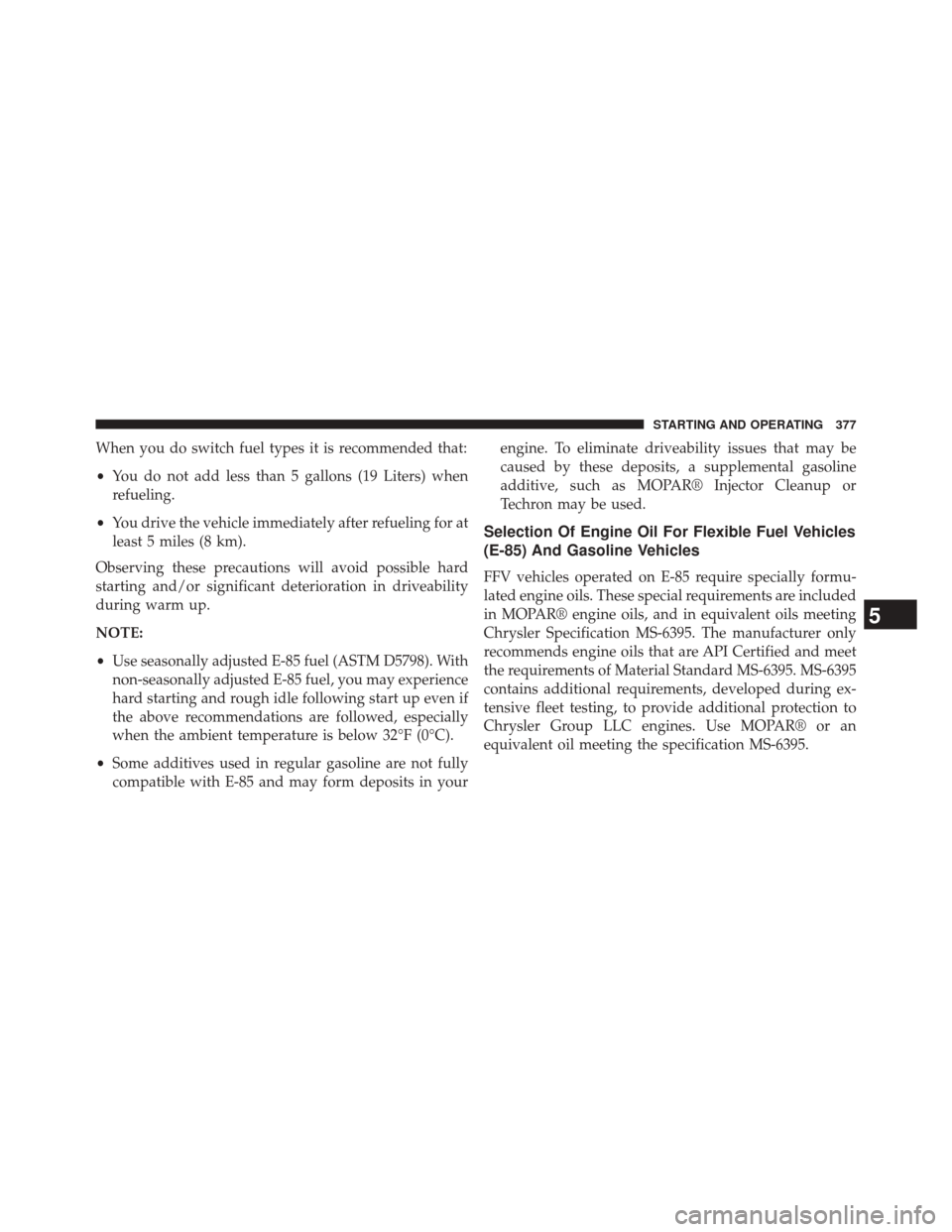Page 67 of 522

The Advanced Front Air Bag gas is vented through the
vent holes in the sides of the air bag. In this way, the air
bags do not interfere with your control of the vehicle.
Supplemental Seat-Mounted Side Air Bag (SAB)
Inflator Units
The Supplemental Seat-Mounted Side Air Bags (SAB) are
designed to activate only in certain side collisions.
The ORC determines if a side collision requires the side
air bags to inflate, based on the severity and type of
collision.
Based on the severity and type of collision, the side air
bag inflator on the crash side of the vehicle may be
triggered, releasing a quantity of non-toxic gas. The
inflating SAB exits through the seat seam into the space
between the occupant and the door. The SAB fully
inflates in about 10 milliseconds. The side air bag moves
at a very high speed and with such a high force that itcould injure you if you are not seated properly, or if items
are positioned in the area where the side air bag inflates.
This especially applies to children.
Front And Side Impact Sensors
In front and side impacts, impact sensors can aid the
ORC in determining appropriate response to impact
events.
Enhanced Accident Response System
In the event of an impact causing air bag deployment, if
the communication network remains intact, and the
power remains intact, depending on the nature of the
event the ORC will determine whether to have the
Enhanced Accident Response System perform the follow-
ing functions:
•
Cut off fuel to the engine.
• Flash hazard lights as long as the battery has power or
until the ignition key is turned off.
2
THINGS TO KNOW BEFORE STARTING YOUR VEHICLE 65
Page 352 of 522

WARNING!(Continued)
•Unequal tire pressures from one side of the vehicle
to the other can cause the vehicle to drift to the
right or left.
• Always drive with each tire inflated to the recom-
mended cold tire inflation pressure.
Economy
Improper inflation pressures can cause uneven wear
patterns to develop across the tire tread. These abnormal
wear patterns will reduce tread life resulting in a need for
earlier tire replacement. Under-inflation also increases
tire rolling resistance resulting in higher fuel consump-
tion.
Ride Comfort And Vehicle Stability
Proper tire inflation contributes to a comfortable ride.
Over-inflation produces a jarring and uncomfortable
ride. Both under-inflation and over-inflation affect the stability of the vehicle and can produce a feeling of
sluggish response or over responsiveness in the steering.
NOTE:
•
Unequal tire pressures from side to side may cause
erratic and unpredictable steering response.
• Unequal tire pressure from side to side may cause the
vehicle to drift left or right.
Tire Inflation Pressures
The proper cold tire inflation pressure is listed on the
driver’s side “B” Pillar or rear edge of the driver’s side
door.
At least once a month:
• Check and adjust tire pressure with a good quality
pocket-type pressure gauge. Do not make a visual
350 STARTING AND OPERATING
Page 379 of 522

When you do switch fuel types it is recommended that:
•You do not add less than 5 gallons (19 Liters) when
refueling.
• You drive the vehicle immediately after refueling for at
least 5 miles (8 km).
Observing these precautions will avoid possible hard
starting and/or significant deterioration in driveability
during warm up.
NOTE:
• Use seasonally adjusted E-85 fuel (ASTM D5798). With
non-seasonally adjusted E-85 fuel, you may experience
hard starting and rough idle following start up even if
the above recommendations are followed, especially
when the ambient temperature is below 32°F (0°C).
• Some additives used in regular gasoline are not fully
compatible with E-85 and may form deposits in your engine. To eliminate driveability issues that may be
caused by these deposits, a supplemental gasoline
additive, such as MOPAR® Injector Cleanup or
Techron may be used.
Selection Of Engine Oil For Flexible Fuel Vehicles
(E-85) And Gasoline Vehicles
FFV vehicles operated on E-85 require specially formu-
lated engine oils. These special requirements are included
in MOPAR® engine oils, and in equivalent oils meeting
Chrysler Specification MS-6395. The manufacturer only
recommends engine oils that are API Certified and meet
the requirements of Material Standard MS-6395. MS-6395
contains additional requirements, developed during ex-
tensive fleet testing, to provide additional protection to
Chrysler Group LLC engines. Use MOPAR® or an
equivalent oil meeting the specification MS-6395.
5
STARTING AND OPERATING 377
Page 503 of 522

Automatic Transmission....................303
Adding Fluid ......................... .451
Fluid and Filter Changes ..................453
Fluid Level Check ...................... .451
Fluid Type ........................... .450
Gear Ranges .......................... .306
Special Additives ...................... .450
Autostick .............................. .320
Auto Unlock, Doors ........................34
Battery ................................ .433
Keyless Transmitter Replacement (RKE) ........27
Location ............................. .433
Belts, Seat ...............................44
Body Mechanism Lubrication .................437
B-Pillar Location ......................... .344
Brake Assist System ...................... .333
Brake, Parking .......................... .327
Brake System ........................... .448Anti-Lock (ABS)
....................... .329
Fluid Check .......................... .448
Master Cylinder ....................... .448
Parking ............................. .327
Warning Light ........................ .221
Brake/Transmission Interlock .................305
Bulb Replacement ........................ .470
Bulbs, Light ..............................96
Calibration, Compass ..................... .240
Capacities, Fluid ......................... .477
Caps, Filler Fuel ................................ .379
Oil (Engine) .......................... .423
Power Steering ........................ .326
Radiator (Coolant Pressure) ................445
Carbon Monoxide Warning ...................92
Car Washes ............................ .454
Cellular Phone .......................... .128
10
INDEX 501